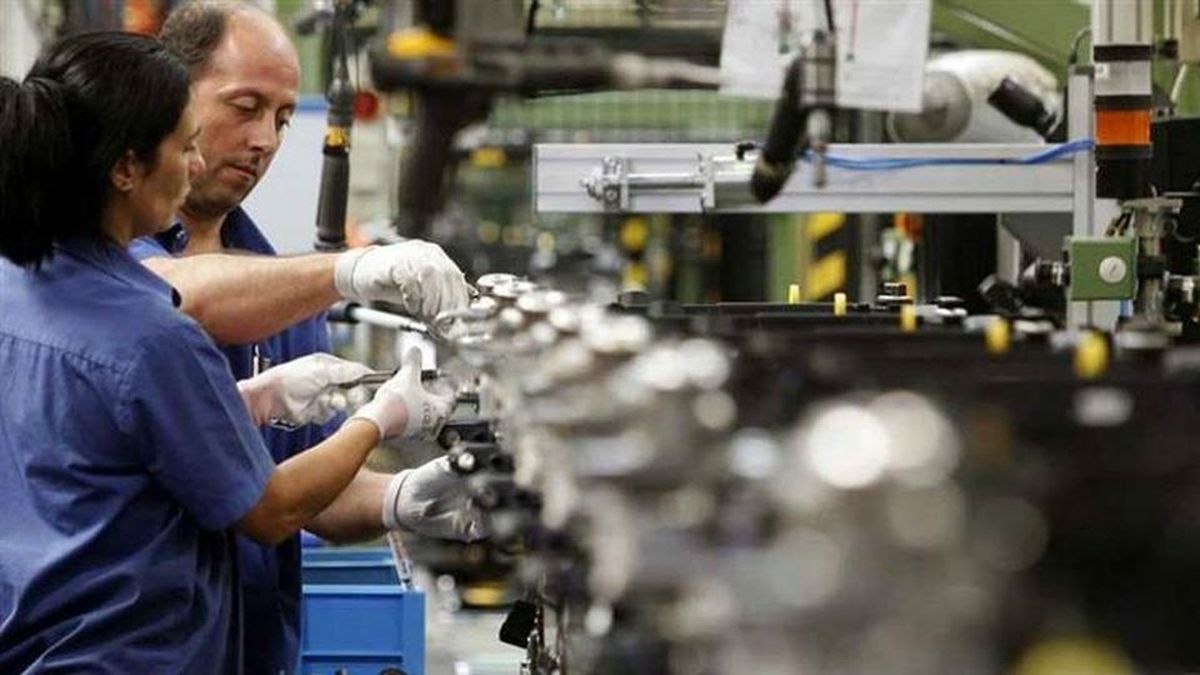In the annual accumulated, Eight of the twelve sectors that make up the Industrial Production Index prepared by the UIA maintained increases compared to 2019, mainly those of durable goods and some of their chains (Automotive, Non-metallic Minerals, Chemicals, Rubber and Plastic, Tobacco and some segments of Food and Beverages, Metalworking and Paper and cardboard).
Still other four sectors continue below (Publishing and Printing, Basic Metals, Petroleum Refining and Textile Products).
According to the manufacturing entity, During August, the most significant improvements were seen in sectors such as Automotive, which had a rise of + 48.5% compared to 2020 and + 24.5% compared to 2019, with good performance in both sales to the domestic market and exports.
For its part, the Consumer Electronics sector registered an annual increase of + 114.6%, while compared to 2019 the increase was + 11.5%, from the boost in the production of air conditioners and cell phones.
Both sectors are in a recovery phase after the sharp falls of the previous years, explained the UIA. In addition, he pointed out that there were also increases in the Non-metallic Minerals industry (+ 14.2% annually and + 10.5% compared to 2019) from the recovery of construction and household spare parts.
Meanwhile, there are sectors that, although they exceeded production levels compared to 2019, have a very heterogeneous behavior in their interior: this is the example of Metalmecánica, which registered an expansion of + 16.3% year-on-year and repeated the increase with respect to 2019 (+ 13.9%) for the second consecutive month.
Something similar happens in Paper and Cardboard: the sector registered a year-on-year increase (+ 8.7%) and exceeded the levels of 2019 (+ 5.9%).
Nevertheless, the increase continues to be driven by the production of packaging paper as a result of the expansion of e-commerce, while other items such as newspaper and printing paper continue not to reach the levels of 2019 due to the rise of digital media and virtuality, the business entity evaluated.
The report also revealed that the data available for September indicate mixed trends in economic activity data: although almost all maintain increases compared to 2020, against 2019 the situation is uneven. In some cases, the increases with respect to 2019 respond to the worst bases of comparison after the impact of the devaluation after the STEP in August of that year.
Automotive production (57.2% versus September 2019) and construction activity (cement dispatches: + 18.2% versus 2019) maintained greater increases.
Within this framework, the UIA estimated that 2021 “is heading to close with the first rise after three years of recession “
However, he warned that the outlook for the fourth quarter of the year and for 2022 “contains several elements of uncertainty, especially at the macroeconomic level and in aggregate demand.” In this sense, he pointed out that private consumption, the main component of aggregate demand, continues to lag behind other indicators of economic activity.
For his part, he indicated that although exports are recovering in line with world growth, “there are several warning signs that should be considered, such as the weakening of this growth due to the Delta variant, the fall in international prices and the high logistics cost of foreign trade, driven both by the cost of freight and by the limited availability of containers. “
The UIA emphasized that industrial activity “is at a turning point and although it has better prospects than in previous years, it is highly conditioned by the future of the macroeconomic context of high uncertainty.”
David William is a talented author who has made a name for himself in the world of writing. He is a professional author who writes on a wide range of topics, from general interest to opinion news. David is currently working as a writer at 24 hours worlds where he brings his unique perspective and in-depth research to his articles, making them both informative and engaging.




